This is a really groundbreaking, thought-provoking sort of literature.
H.O.U.S.E.
A funky and fascinating book about contemporary architecture for children.
Translated by Elżbieta Wójcik-Leese
-
Description
Have you ever seen a house without walls? Is it possible to pack a house into a suitcase? Can a house behave like a turtle? What kind of house can homeless people have? Would you prefer to live in a moon, in a nut … or inside a sewage pipe?
Architecture is amazing! H.O.U.S.E. demonstrates that the space we live in doesn’t have to be a dull cube. While it should meet the needs of its inhabitants and surroundings, it can also be distinctive, and sometimes utterly surprising.
Witty, richly coloured drawings and concise, accessible descriptions of 35 extraordinary houses designed by the most prominent architects of the world.
-
Book Details
Country of Origin Poland Reader Age 6-8 year, 8-12 year Book Size 20.5 × 20.5 mm
(Hardback)ISBN 9781877467660
(Hardback)
-
Reviews
Available worldwide from your local bookstore or online.

Subscribe to our newsletter/s
Hear from us about new books, guest recommendations, behind-the-scenes and competitions.

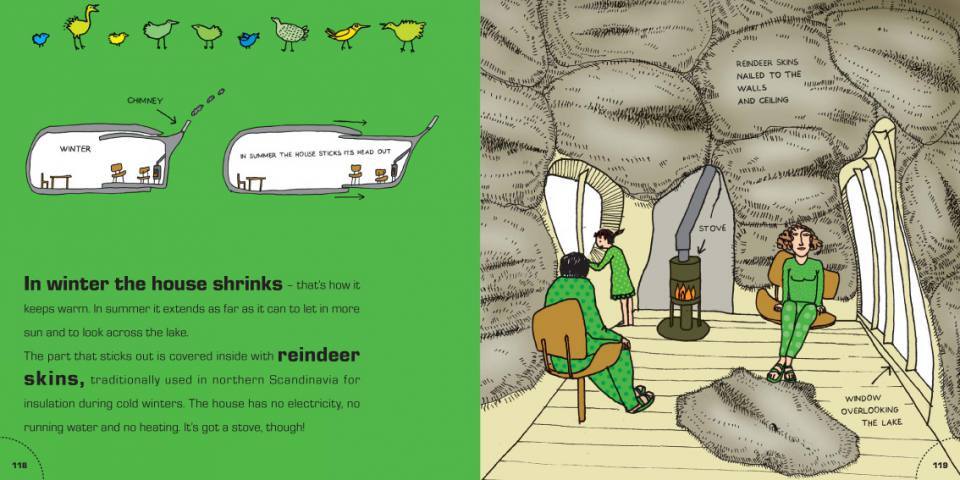
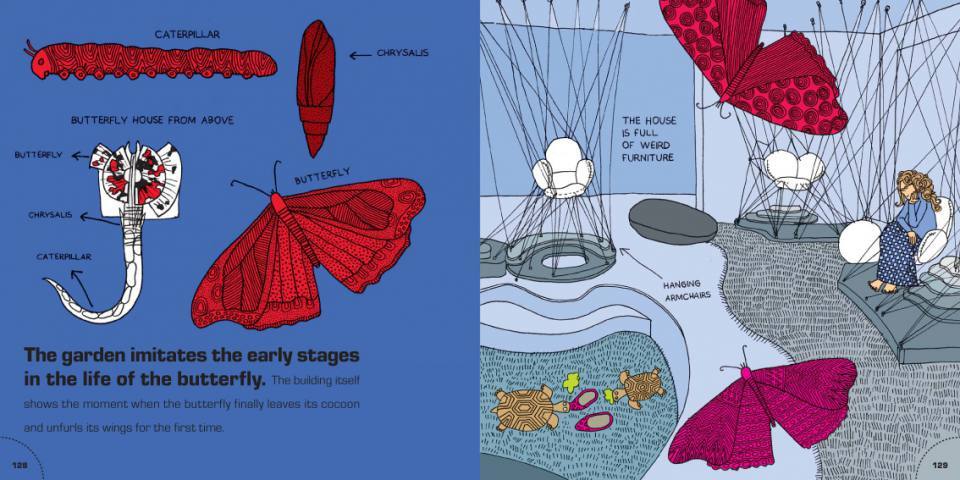
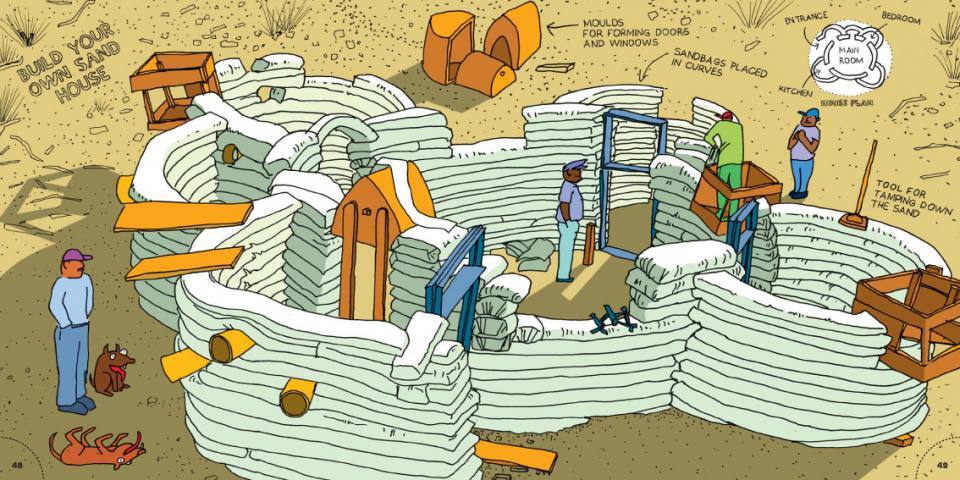
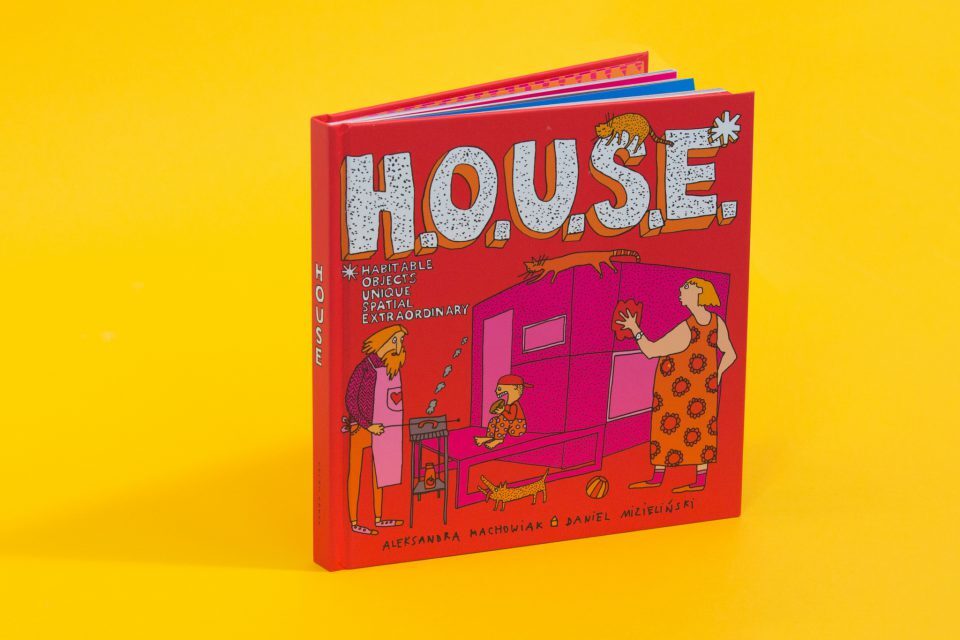
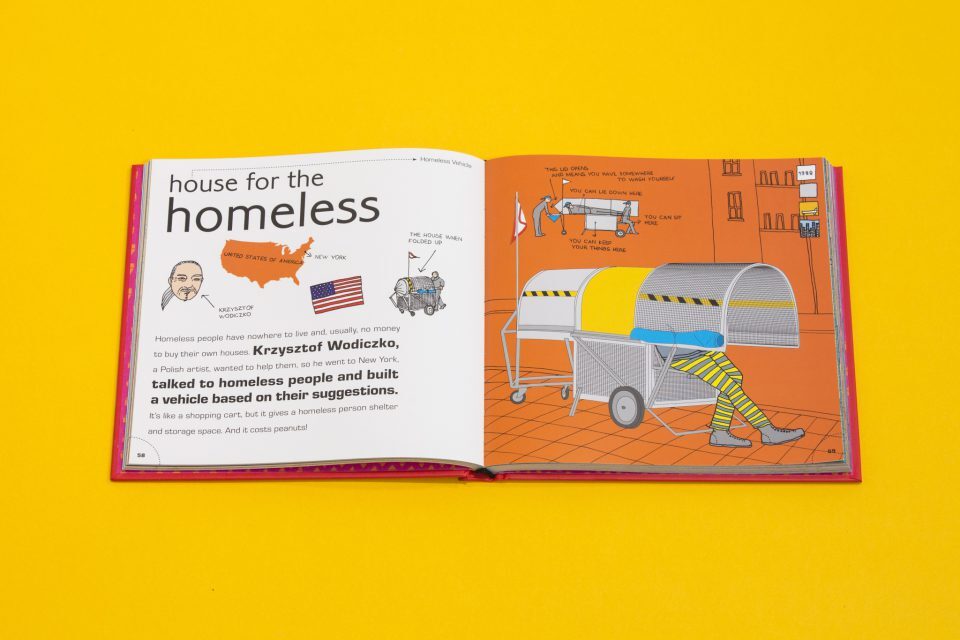

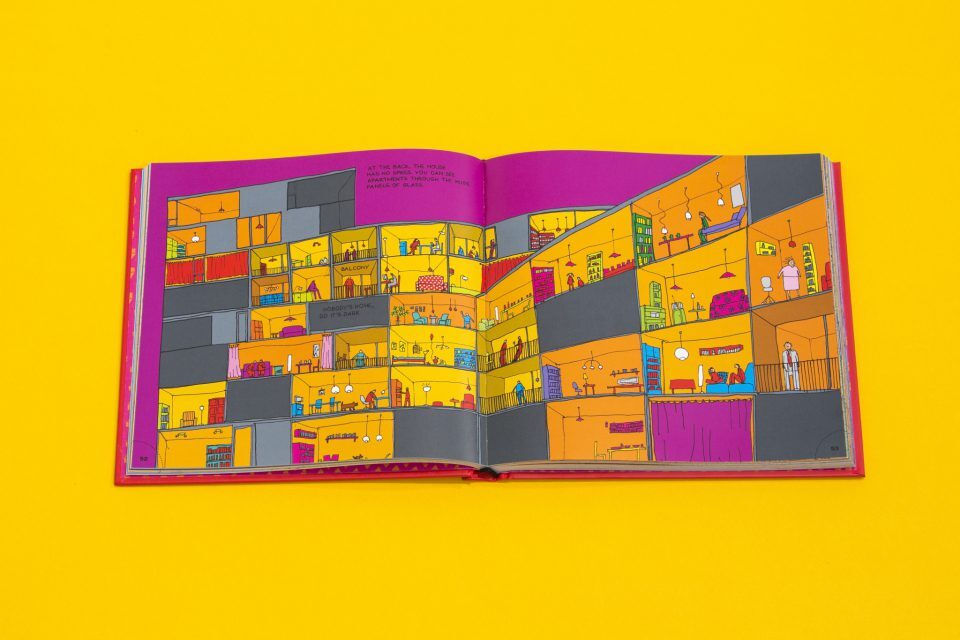
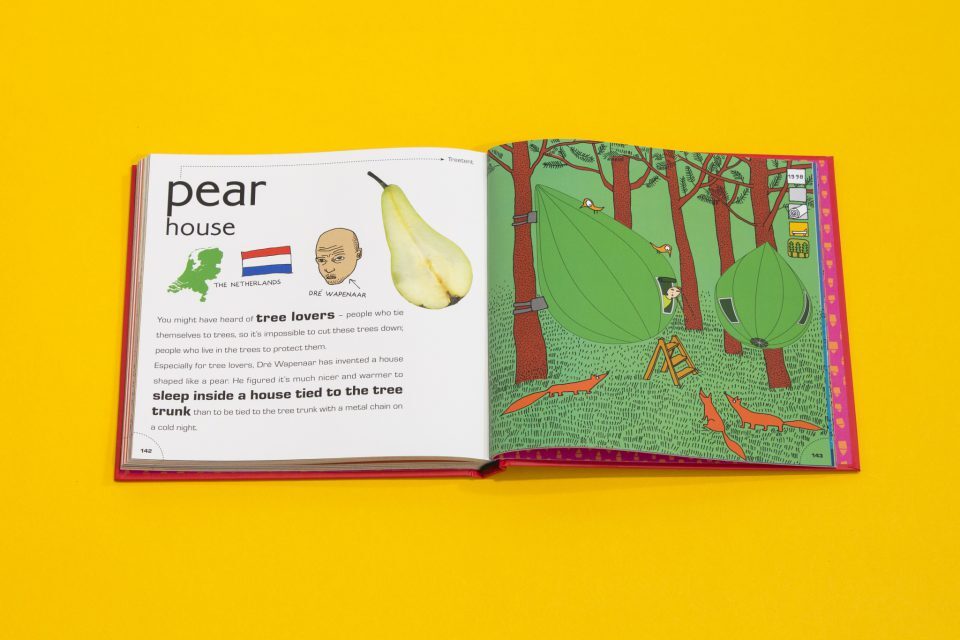

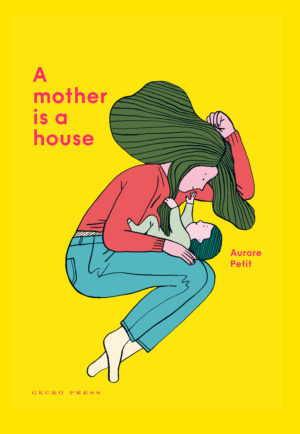
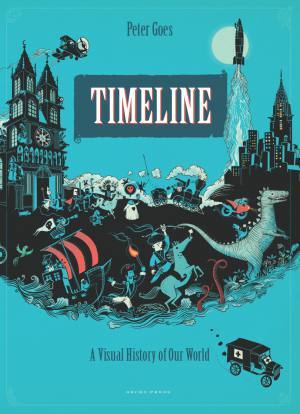

Reading Time, May 2011 –
H.O.U.S.E. (Habitable, Objects, Unique. Spatial, Extraordinary) says that ‘architecture is an amazing art’ but this book is amazing in itself. After setting up the premise of its contents (thirty-five extraordinary houses boldly illustrated and tagged with graphic keys to indicate what the house is made of, what energy source it uses, what type of land it is situated on and what sorts of rooms it has), the authors/designers devote four to six pages to an unusual house from around the world. Each house is drawn from multiple angles with a small amount of descriptive text discussing its imaginative origins. A picture of the architect sits alongside the flag and a simple map of the country where the house has been built. This is a book to pick up time and again. It showcases how ideas can translate into strange and beautiful designs and then become wonderful homes. The illustrations are sometimes funny but always clear, and are captioned with extra pieces of information about the houses’ particular features. This is a book for all ages that will promote discussion about buildings and visions and originality.
Gisborne Herald, January 2011 –
H.O.U.S.E. is one of the most inspiring kids books of the decade. So much so that even adults will enjoy it. When this strange looking book first arrived on the review book desk, most people thought how bizarre! Who would read it. But take it home and children of all school ages will devour it, inspiring curious adults to take another look. This is a fascinating collection of the 35 most unique houses in the world. In fact the definition of H.O.U.S.E. is Habitable Objects Unique Spatial Extraordinary. They range from a see-through house in Stuttgart to a sandhouse in Iran and an egg inspired house in Tokyo, designed to insulate inhabitants from the incessant noise of the city. The collection is based on some of the most innovative creations by architects around the world. It is illustrated comic book style with more than a hint of humour, by Daniel Mizielinski, who also uses coded symbols to show what each house is made of, the environment it is in and how many rooms it is equipped with, with flags to show which country they are in. It really appeals to the imagination of the young (and young at heart), who pore over it endlessly to choose their own ideal home. It is a book which shows that architecture is amazing!
Magpies, March 2011 –
Sometimes a book is so strikingly original that there is nothing to compare it to. To say that H.O.U.S.E. is a book about houses would make it sound boring. Yet, it is a fascinating book that traps both young and old readers. The only parallel I can think of is The Guiness Book of Records, because of the way readers soon start carrying it around quoting interesting sections aloud.
Originally published in Polish (as D.O.M.E.K.) in 2009, H.O.U.S.E. has as its motto: Architecture is an amazing art. This is certainly supported by its 35 unusual modern houses selected from all over the world. A German architect wanting a house in which to drink tea made an inflatable one, while a Japanese colleague built his tea-house at the top of a tree. Houses have been built on wheels, underground, in deserts, beneath water towers, and on cliff edges. Houses have been constructed from shipping containers, sand, curtains and sewer pipes. Houses have been built in the shape of caterpillars, sphinxes, stairs, sails and eggs. (All this certainly justifies the title, which is explained as H.O.U.S.E. = Habitable Objects Unique Spatial Extraordinary.)
Each house in H.O.U.S.E. has been chosen for its originality (less politely referred to as its really weird ideas) coupled with unearthly design and construction. Each home is given a four-to-six page coverage, with plenty of sketches and explanatory diagrams, attractively drawn by Daniel Mizielinski.
One example shows how it works. The house has its formal name (Dragspelhuset) plus a handy label (Turtle House), location (Swedish nature reserve), architects (a Dutch couple) and special features. (Lined with reindeer skins, this house has a retractable section, so its smaller in winter.) A system of icons provides more information. (Built 2003, of timber, of sustainable materials, sleeping area, kitchen, in rural forest.) The text is always engaging and chirpy, with bold type to emphasise a house’s special features. (Have you ever seen how a turtle hides inside its shell when it goes to sleep? This house does exactly the same.)
H.O.U.S.E. is a book that fires the imagination. A splendid example of imagination and good design, it deserves its place on the IBBY Honour List.
The Weekend Sun, February 2011 –
An inspiring gift for the creative child, or an imaginative adult, H.O.U.S.E explores a pictorial overview of 35 unusual houses where architects have let their creativity take flight. There’s an incredible selection of designs, for example, a suitcase house, an inflatable teahouse, a burrow, a curtain house, a UFO house, and many others.
Set in a variety of landscapes around the world, the architects have incorporated unique features of each location. For instance, the Upwind House in New Mexico, stands on a flat-top, desert mountain and has to withstand scorching temperatures and high winds. Architect Steven Holl designed a large hole in the house for the winds to blow straight through. It has tanks for rain-water, solar panels for electricity and the aluminium cladding reflects the heat.
Then there’s the quirky nuthouse. Tom Chudleigh always wanted to feel like a forest elf so he built himself a nut-shaped house that hangs from a tree in a forest.
Some homes were built decades ago, yet they still look modern and futuristic. Antti Lovag built his first Bubble House in 1970 near the French Riviera. Multi-size spheres, made of red-painted concrete, join together and spread out like a giant jellyfish.
The authors have drawn detailed impressions of the houses. Readers of all ages can study the innovative designs, layouts, and building materials used. Each page is filled with fascinating facts and useful maps show where the houses are built.
New Zealand publishers, Gecko Press, won the English translation rights for H.O.U.S.E. Its full title: Habitable Objects Unique Spatial Extraordinary.
Sun Herald, March 2011 –
H.O.U.S.E. features descriptions, illustrations and diagrams of 35 of the most incredible houses around the world. These unique abodes include the bubble house, the pear house, the butterfly house and the zigzag house from Australia. There’s even a house specially designed for the homeless. Discover interesting features about each house, find its location and read about the story behind its construction. Each house comes with an illustrated key code indicating sustainability, inclusions, building materials and so on. This book is for anyone with an interest in design and architecture.
The Children’s Bookshop newsletter, February 2011 –
Have you seen a house without walls? Can you pack a house into a suitcase? Would you prefer to live inside a sewage pipe? Is there really a house of only stairs?
H.O.U.S.E. is a funky and fascinating book about contemporary architecture for children. It shows that the space we live in does not have to be a dull cube and, while it should meet the needs of its inhabitants and surroundings, it can also be distinctive. Originally from Poland and translated into English by Gecko Press, the book features 35 amazing houses designed by prominent architects, including a UFO house in Finland, a see-through house in Germany and a house for drinking tea in Japan. Fascinating for all ages.
Welington City Libraries Kids Blog, February 2011 –
Have you ever thought about what sort of house you would like to live in. Perhaps you would like to live in a tree house, under the ground or on the water. Perhaps it could have a special shape like a caterpillar or a pear and what would it be made of – glass, plastic, sand or even fabric.
H.O.U.S.E is a fantastic book that talks about 35 houses from around the world that are a little bit different. In fact they are a lot different.There is the inflatable house in Germany, the pipe house in Austria or the house of stairs in Portugal.This is a great book and you will really enjoying reading about how and why they came to be built.
Alive, Issue 7, February 2011 –
With perplexing questions such as would you rather live in a moon, a nut or a sewage pipe? Or, have you ever seen a house without walls? This book reinvents the concept of architecture for kids and while a house must (for the most part) be functional and comfortable, it can be much more than a dull cube. Nifty illustrations supplement a great read for kids ages 6+.
Around the Bookshops, February 2011 –
This book by two Polish authors certainly lives up to the Gecko Press mantra: ‘curiously good children’s books from around the world’. It is also about the world, featuring 35 houses as diverse as a bubble house, a nut house, a shipping container house, a see-through house and an inflatable house. There’s a house with curtains instead of walls, a house for the homeless that folds up into a sort of shopping trolley on wheels and a house designed to fill the space under a disused water tower. Some of the houses are designed to solve problems. Others are simply houses that someone – the client of the architect – liked the idea of.
For each house, there is a description, a picture, a plan, it’s country’s map and flag, a drawing of the architect and a row of square icons describing the materials, location, type of rooms and energy used. There are also two pages of world maps (no houses from NZ, sadly, and only one from Australia) and some other pages of slightly irrelevant but colourful and funky cartoons.
This is a picture book about contemporary architecture to challenge children’s preconceptions of what a house is, and make them think about what it could be. It is ideal for children from about 8 years old up who love maps, diagrams, constructions and quirky bits of information, but actually it will fascinate adults too, and anyone who is interested in housing and design. I noticed that Unity Books in Wellington had it on display right at the front of the shop, and its bright red cover just begs you to pick it up and have a look.
Glee Books ‘Summer Reading Guide’, November 2010 –
This book about contemporary domestic architecture is full of vivid illustrations and cool facts.
Weekend NZ Herald, November 2010 –
Get your kids thinking about the space they live in with this fascinating book about contemproary architecture. Witty drawings and accessible descriptions of 35 famous house.
Page & Blackmore Booksellers, December 2010 –
A truly original book about inventive houses around the world and real life architects, presented in an animated style that evokes those drawings you did when you were a kid. A book for architects, for kids who love structures, and adults who love houses. An intriguing and very cool book.
‘Books for Christmas Giving 2010’, Storylines, November 2010 –
A dazzling book about 35 extraordinary houses from around the world.
Imagine a house in a tree, packed into a suitcase, with no walls. These are all real buildings, with information about the architects, materials, layouts and locations, supported by vividly-coloured, hand-drawn illustrations. A fascinating book to be enjoyed by 7+ and many adults too.
GuideToAuckland.co.nz, December 2010 –
Informative and entertaining, H.O.U.S.E (Acronym: Habitable. Objects. Unique. Spatial. Extraordinary) reveals real architectural wonders of domestic households throughout the world. With quirky floor plans and interesting facts about the design of people’s unique living spaces, this book is perfect for the big kid of the household (that’s you!). You’ll be spurting facts all over the place. For example, did you know there’s a house shaped like the crescent of the moon in the U.K? And that someone actually lives in a house with curtains instead of walls? It’s fascinating stuff.
Tomorrow’s Schools Today, December 2010 –
Have you ever seen a house without walls? Is it possible to pack a house into a suitcase? Can a house behave like a turtle? What kind of house can homeless people have? Would you prefer to live in a moon, a nut or a sewerage pipe? House shows that architecture is amazing and that the space where we live doesn’t need to be a dull cube.
House is a funky and fascinating book about contemporary architecture for children. It shows that while form is dictated in part by the needs of the inhabitants and by location, it can also be distinctive and sometimes very surprising.
House contains witty, richly coloured drawings and concise, accessible descriptions of 35 extraordinary houses designed by the most prominent architects in the world. This book is of interest to anyone over eight and shows houses from around the world. It explains the concepts and inspiration for each building, also the material used and ecological options. The book is easy to use, with helpful icons making it easy to see when a house was built, the material used and what it contains at a glance. It is a great introduction into the more avant garde forms of architecture and to architecture as art forms.
’50 Best Children’s Books of 2010′, NZ Listener, December 2010 –
H.O.U.S.E. introduces kids to the amazing art of architecture, cartoon-style. These weird, wonderful and real houses from around the world are built, with an eye to the future, of sand, plastic, fabric and glass as well as more conventional materials. Think converted water towers, mine buildings, shipping containers and sewerage pipes … anything is possible.
Christchurch City Libraries blog, December 2010 –
H.O.U.S.E (or Habitable, Objects, Unique, Spatial, Extraordinary) by Aleksandra Machowiak and Daniel Mizielinski is a fascinating book about contemporary architecture for kids. It’s a book for all those children (and adults) who are fascinated with buildings of all shapes and sizes. Inside, you’ll find spiky houses, inflatable houses, houses in trees and houses underground, from all over the world. The authors explain the inspiration behind the design of each house, as well as the materials used to build it, and where in the world it can be found.
Design Daily blog, November 2010 –
What exactly is a house? A simple dwelling with a roof and four walls? Sure, if you’re ordinary. But did you know a house can also be a nut, a suitcase, a UFO and even a giant balloon you blow up? In the new book HOUSE, authors Aleksandra Machowiak and Daniel Mizielinski seek to expand perceptions of what a house is, by introducing children to 35 of the more unusual, distinctive and quirky houses found across the globe, detailing the witty inspiration behind each. Take the `Suitcase House’ in China for example, which features rooms that only appear as you need them, or the `Nut House’, resembling a hazelnut and sitting suspended in the Canadian forest.
Taking you on architectural journey far and wide-from Poland to Portugal, Iran to Australia-each dwelling comes complete with an array of specially designed icons, allowing you to at a glance discover the features of the house, like does it use solar energy? Is it located in the city or a small town? Is it made of sand, timber, plastic, steel, or even fabric? Who designed it and when was it built?
By utilising loads of bright colors, illustrations and funky infographics, the authors make global architecture a fun, accessible and educational experience for children-and as we discovered when the book was in our office-adults too. In fact, one copy is still missing…
John McIntyre, National Radio, November 2010 –
This is a fascinating book, extraordinary. It’s sort of a child’s guide to the world of international, cutting-edge architecture, looking at some of the most interesting houses built around the world, why they were designed as they are, and the architects who designed them.
I’m struggling a little to describe it actually. If you imagine the more inventive houses that feature on the television show Grand Designs, but designed by Andy Warhol with input from Jeremy Clarkson from Top Gear – how’s that for a mental picture?
There’s 35 houses in here, they’re spread over two or three pages each section. There’s a Japanese tea house built in a tree; a turtle house in Sweden that shrinks in the winter so it keeps warm and is lined with reindeer skins, and expands in the summer; there’s a shopping cart house for homeless people that turns into a sleeping pad. There’s a suitcase house, a caterpillar house, houses in shipping containers, even a house inside a sewage pipe.
Now, I’m not sure I’ve ever seen a book like this about architecture for children, and especially `futuristic’ architecture – but then, I think, why not? Children are the ones that don’t have a choice where they live and they will be the future buyers and builders of homes, and so they have a massive stake in the way buildings are going to be designed and built.
But I don’t think this book is just a children’s book. I think anyone involved in any sort of architecture – building, design – would cherish this book. Interestingly, it’s a Polish book but the English translation’s been produced here in Wellington by Gecko Press and it’s what you’d imagine from them: complete out of left-field, deliberately unusual, quite, quite brilliant.
I think any company that has a business in engineering, in architecture, in design, anything – this is a really groundbreaking, thought-provoking sort of literature.
* Listen to the podcast here (Start at 05:45)
http://www.radionz.co.nz/audio/national/ntn/2010/11/12/book_review_with_john_mcintyre/
Beatties book blog, November 2010 –
I loved it… Non-fiction of the very best kind, ages 6 to infinity! And it should be owned by every architect.
Story Time Books for Kids, November 2010 –
Gecko Press does it again, this time zipping into a niche which is all but uninhabited. This book, by Aleksandra Machowiak and Daniel Mizielinski, is a book about architecture for children, not the most common subject. It takes 35 houses around the world and discusses what it it that makes them worthy of notice. Some of them are fantastic solutions to particular problems, like the lift house, designed for a wheel-chair bound person; some are amusingly eccentric, like the house designed by an architect with a fascination for the number 4, a caterpillar house, a snail house, and other wondrously imaginative meditations on the idea of a house. This is a terrific way to introduce children to the wider implications of the playing with ideas that some architects do. Interestingly set out, with icons which condense some of the essential information so that the text can concentrate on the amazing features. Should be in every school library, and many homes.